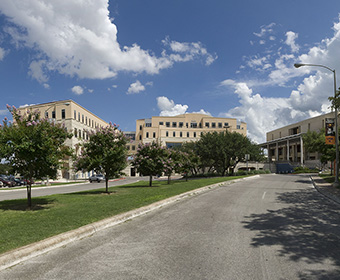New peer models of excellence

Dear Roadrunners,
Though we are forging our own, distinct path as San Antonio’s university of the future, there are lessons to be learned from the successes of others.
In concert with the 60x30TX State Higher Education plan, UT System launched an effort to assist all UT institutions with identifying campus-specific aspirational peers and strategic growth goals for 2030. These new peers will provide formal benchmarks for our annual review.
Working with our colleagues on the UT System Strategic Planning and Peer Selection Task Force, we developed a list of ten institutions to serve as peer models of excellence, all of which have aspirational qualities we can use to measure UTSA’s progress. Relevant factors we considered included the institution’s age, membership in the Coalition of Urban Serving Universities, urban location, demography and size.
They are:
|
|
In addition to having similar “ingredients” as UTSA, these ten institutions have rapidly ascended to new levels of excellence within a specific period – typically the last ten years—proving that systemic change is possible in a relatively short period of time. We will emulate some of their strategies and best practices here at UTSA.
That said, let me extend a caveat – there are some limitations when comparing these institutions to ours. As an example, UTSA’s relative youth and smaller alumni base make fundraising comparisons difficult. Similarly, the diversity of athletic conferences represented in the group create an apples-to-oranges situation when comparing metrics around our athletic programs.
And yet, many of these peer models illustrate clear paths forward for us to achieve our strategic goals.
Arizona State University, for example, tripled their research enterprise in 15 years while simultaneously transforming downtown Phoenix.
Georgia State University improved their graduation rate by 22% in 10 short years.
Florida International University excels in first generation programming and recently constructed a new building dedicated entirely to student success.
These are but a few examples of the impressive achievements and metrics to be found at these peer models. We’ve set up a new web page highlighting these peer models of excellence, and I hope you will take a few minutes to peruse it. My engineering brain loves to dive deep into the comparison data for insights into their shifting institutional priorities and accomplishments. It will be updated regularly as data becomes available.
We are well on our way to creating our own stories of transformation and cultural change here at UTSA. Though at times it might feel like we are pushing rocks uphill, knowing that universities have pushed those same rocks is both inspirational and edifying. In many ways, our peer models are a glimpse into UTSA’s future – where we need to be in ten years as a multicultural discovery enterprise.
No matter your divisional area at UTSA, there is inspiration to be found in their stories of reinvention.
With appreciation,
Taylor